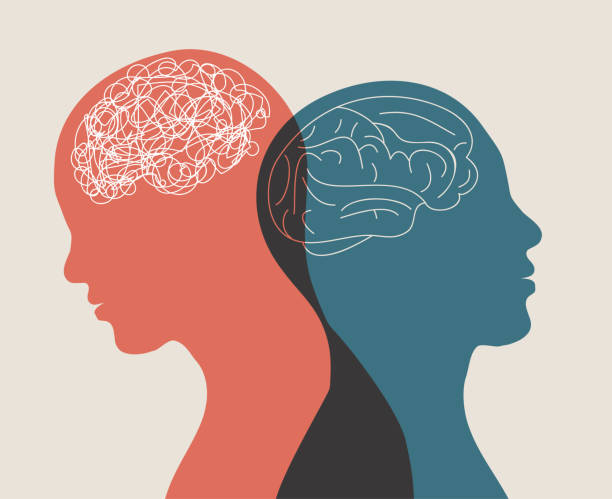Introduction
Imagine this: You’re at a party. The music’s loud, the lights are flickering, and you’re trying to figure out if small talk is still a thing or just a conspiracy. You don’t feel great, but you smile, nod at the right times, laugh at jokes you didn’t quite catch — and by the end of the night, you’re emotionally wiped out.
Welcome to the world of masking — a psychological survival skill often used by autistic and ADHD individuals to fit into neurotypical spaces. In this article, we’ll take a deep dive into what masking is, why it happens, the toll it takes, and how awareness can lead to a better, more inclusive world.
What Is Masking?
Masking is the act of consciously (or subconsciously) hiding neurodivergent behaviors to blend into societal norms. Think of it like putting on a costume — only it’s invisible and you wear it every day.
Common masked behaviors include:
- Forcing eye contact
- Rehearsing conversations mentally
- Mimicking gestures or facial expressions
- Suppressing stimming (e.g., fidgeting, tapping)
While this can help someone navigate school, work, or social situations, it comes at a psychological cost.
The Origins of Masking
Masking often begins in childhood. A child might realize that when they behave a certain way — like avoiding eye contact or talking about their special interests — they get strange looks, corrections, or even punishment. Over time, they learn to suppress these behaviors to avoid rejection.

This social training isn’t unique to neurodivergent individuals, but the degree and effort involved are often far more intense. It’s not just “trying to be polite.” It’s performing an identity that feels foreign.
In a study by Hull et al. (2017), researchers identified camouflaging as a widespread behavior among autistic adults, particularly women, who are often underdiagnosed because of their ability to mask.
Why Is Masking So Draining?
It turns out, being someone else all day is not good for your mental health. Research shows masking is linked with:
- Emotional exhaustion
- Burnout
- Anxiety and depression
- Identity confusion
Cage et al. (2018) found a significant correlation between frequent masking and poor mental health outcomes. The constant self-monitoring can lead to an “always-on” state of hypervigilance, which in turn drains cognitive and emotional resources.
This is especially damaging when the individual lacks a safe space to unmask and be their authentic self.
Who Masks, and Why?
Although masking is most often discussed in the context of autism, it is also common in ADHD, social anxiety, and other neurodivergent conditions.

People mask because:
- They fear rejection or judgment
- They want to keep a job or pass a class
- They’ve been taught their natural behavior is “wrong”
- They’re trying to avoid bullying or conflict
It’s a social survival strategy, not a choice made lightly. For some, masking can mean the difference between social inclusion and total isolation.
The Science of Camouflaging
Hull et al. (2017) developed the “Camouflaging Autistic Traits Questionnaire” (CAT-Q) to measure masking behaviors. They found three main strategies:
- Compensation: Developing tactics to appear more neurotypical
- Masking: Hiding behaviors perceived as inappropriate
- Assimilation: Adopting neurotypical behavior patterns
While these strategies may be effective in certain contexts, they come at a psychological cost.
The Mask Burnout
Long-term masking can lead to autistic burnout, a state of physical, emotional, and mental exhaustion. Think of it as your brain saying:
“We’ve been pretending too long, and now we can’t even pretend to function.”
Symptoms of autistic burnout include:
- Loss of skills (e.g., speech, executive function)
- Heightened sensory sensitivity
- Shutdowns or meltdowns
- Depression and suicidal ideation
And no, a bubble bath won’t fix it. Autistic burnout is not the same as regular stress — it requires deep rest and the ability to unmask.
Why Acceptance Matters
When workplaces, schools, and social circles are inclusive, masking becomes less necessary. Encouraging self-expression, flexibility, and understanding creates space for neurodivergent people to just be.

Simple changes help:
- Flexible communication styles (e.g., email vs. phone)
- Quiet workspaces or sensory-friendly environments
- Encouraging authenticity over conformity
As Dr. Devon Price puts it in Unmasking Autism (2022):
“Masking isn’t about fitting in — it’s about survival in a world that isn’t designed for you.”
Unmasking
Unmasking doesn’t mean oversharing or acting without regard for others. It means:
- Expressing needs without shame
- Allowing natural behaviors (like stimming)
- Choosing comfort over compliance
- Building relationships based on mutual understanding
Unmasking is a process. It takes time, support, and sometimes professional help. But it can be liberating.
Moving Toward Inclusion
The ultimate goal isn’t to stop people from masking, but to create a world where they don’t have to. That requires:
- Early diagnosis and support
- Widespread neurodiversity education
- Representation in media
- Empathy over judgment
Conclusion
So next time someone fidgets in a meeting, avoids eye contact, or skips small talk — they might not be “awkward.” They might just be tired of pretending.
Let’s make the world safe for unmasking.
References
Hull, L., Petrides, K. V., & Mandy, W. (2017). The Female Autism Phenotype and Camouflaging: A Narrative Review. Review Journal of Autism and Developmental Disorders.
Cage, E., Di Monaco, J., & Newell, V. (2018). Experiences of Autism Acceptance and Mental Health in Autistic Adults. Journal of Autism and Developmental Disorders.
Pearson, A., & Rose, K. (2021). A Conceptual Analysis of Autistic Masking: Understanding the Narrative. Autism in Adulthood.
Price, D. (2022). Unmasking Autism: Discovering the New Faces of Neurodiversity.
Subscribe to PsychUniverse
Get the latest updates and insights.
Join 3,005 other subscribers!
Niwlikar, B. A. (2025, July 24). What is Unmasking and 3 Important Strategies to It. PsychUniverse. https://psychuniverse.com/what-is-unmasking/



